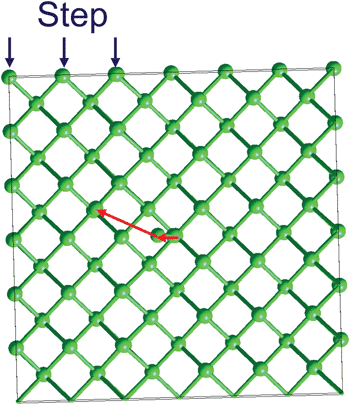Published online by Cambridge University Press: 11 March 2021

First-principles calculations were performed on the evaporation field of Fe, Cu, Mn, and Si in Fe (001) and on the evaporation field and roll-up effect of Fe, Cu, and Mn in the Fe (001) step structure. The larger the evaporation barrier energy tendency, at an electric field of 0 V/nm (absorption energy), the larger was the evaporation field. Electric field evaporation calculation results indicate that the order in which the electric field is easily evaporated is Mn > Cu > Fe > Si. The tendency that Mn and Cu evaporate more easily than does Fe and that the evaporation of Si is less probable is consistent with the experiment of a dilute element in steel. In the Fe (001) step structure, when the electric field is low, the roll-up effect where the evaporated atoms move on the step is large, and when the electric field is large, the roll-up effect is small. The roll-up effect of Cu was almost the same as that of Fe, and the roll-up effect of Mn was small because the chemical bond between Mn and Fe was weak.